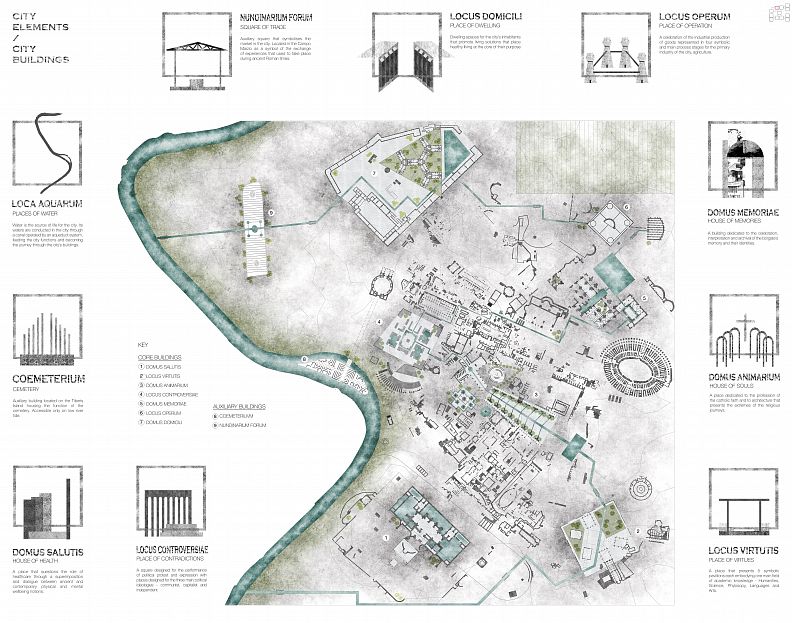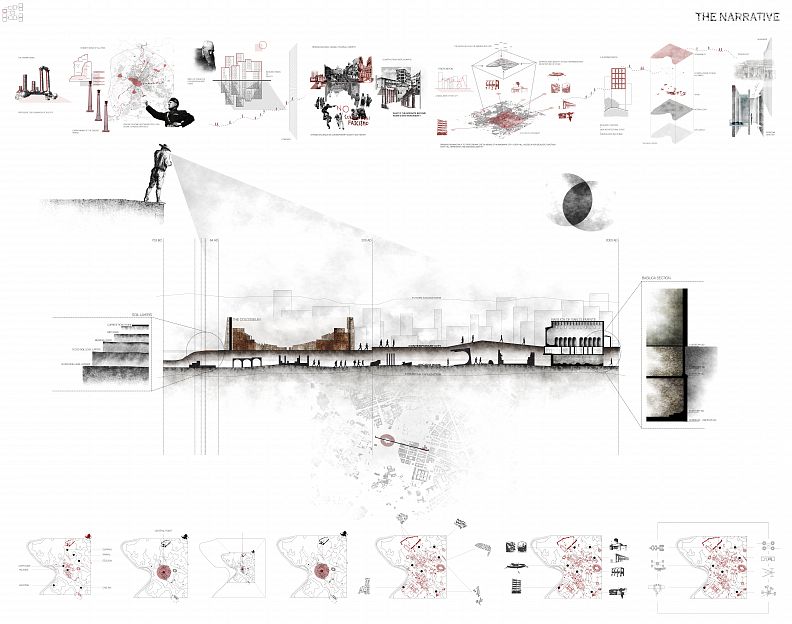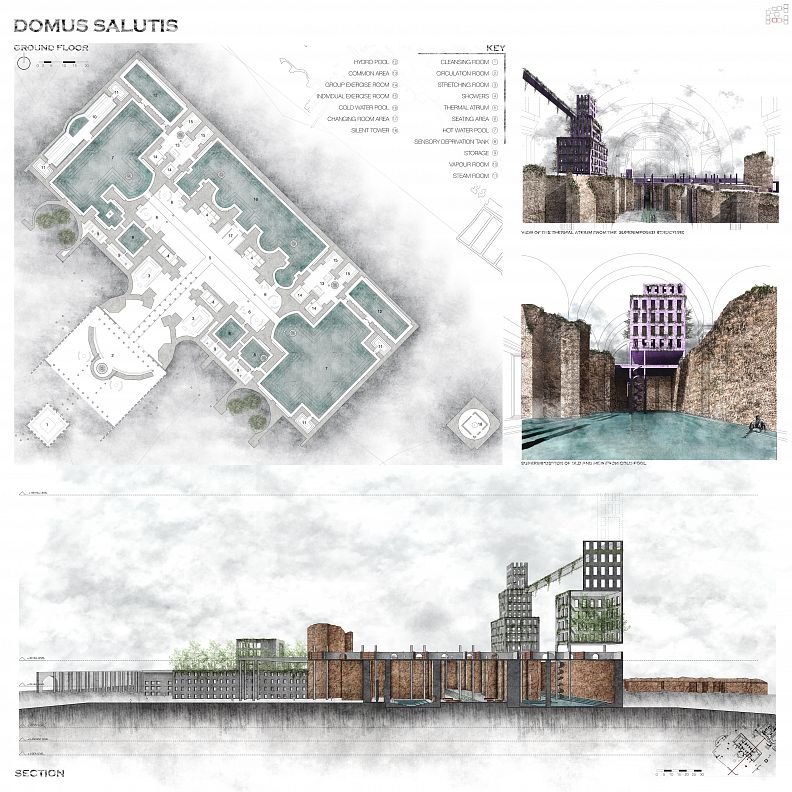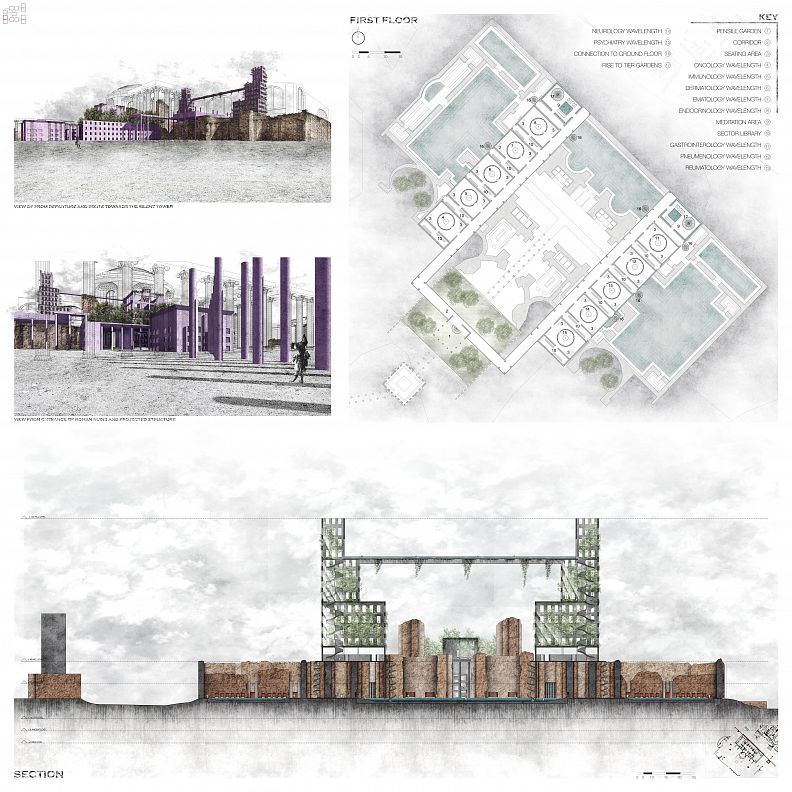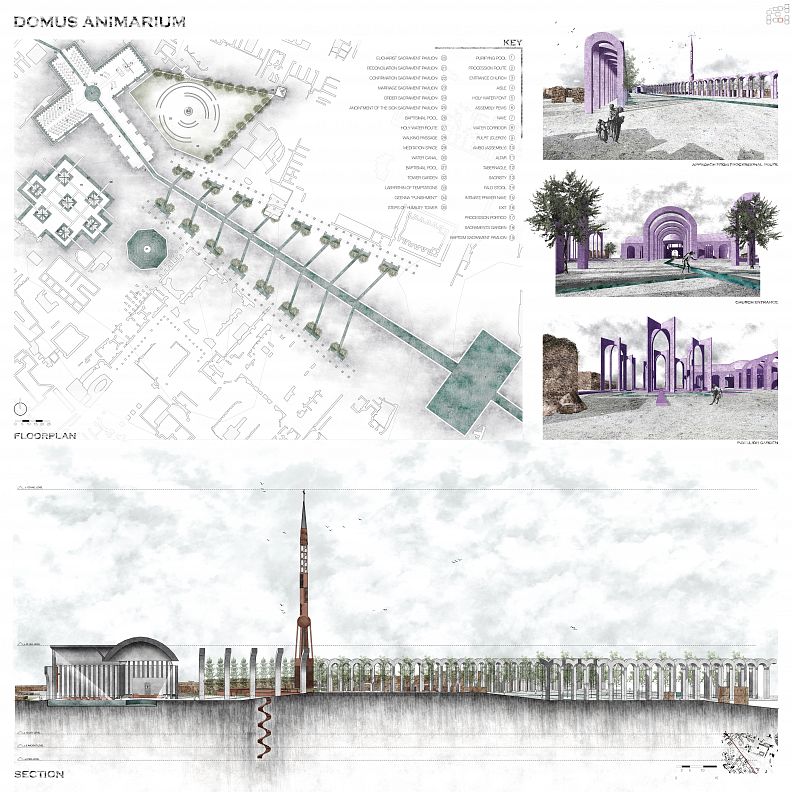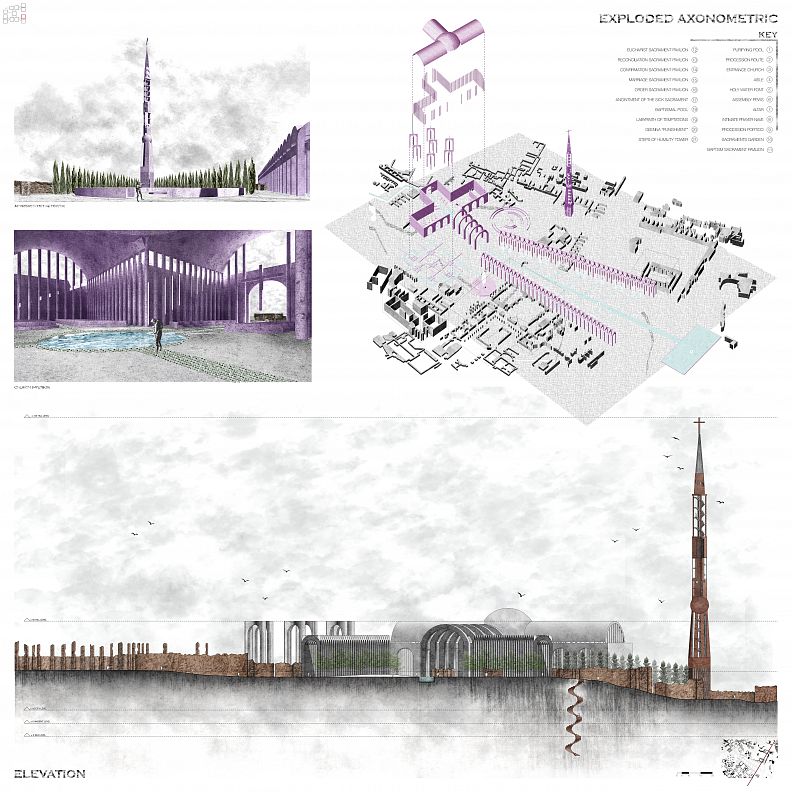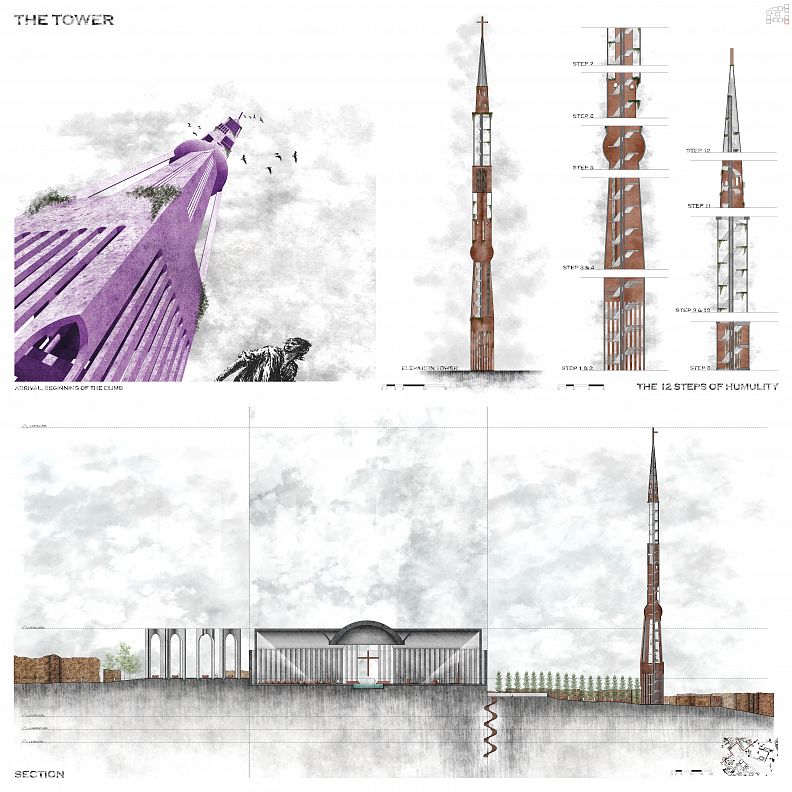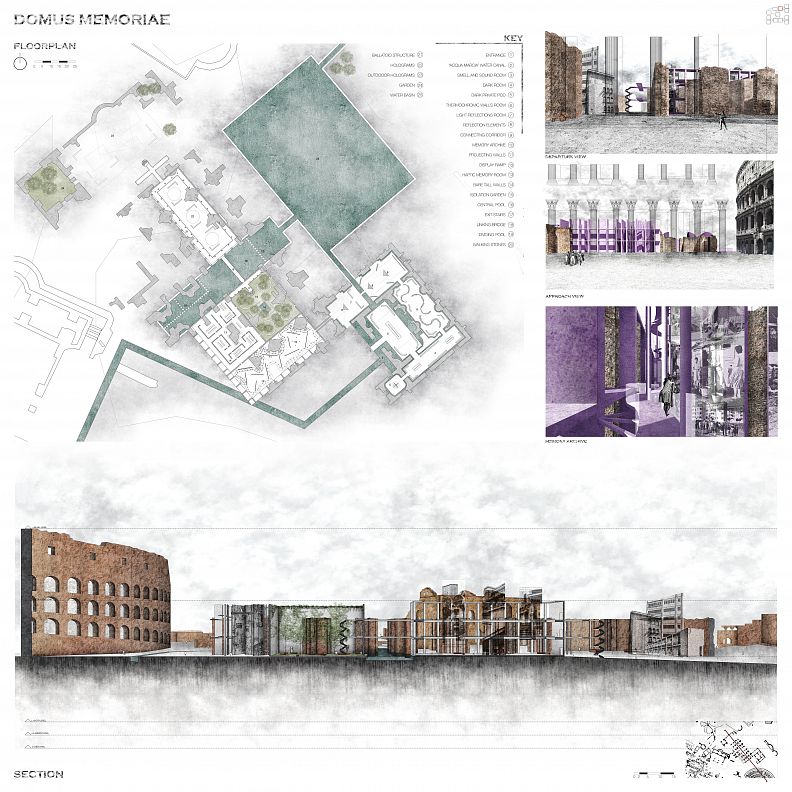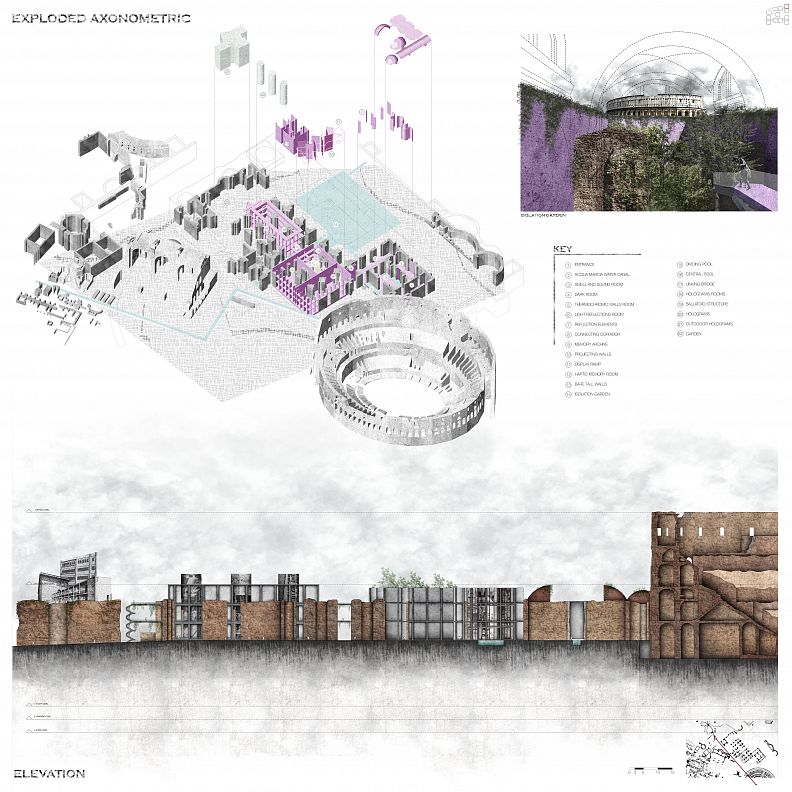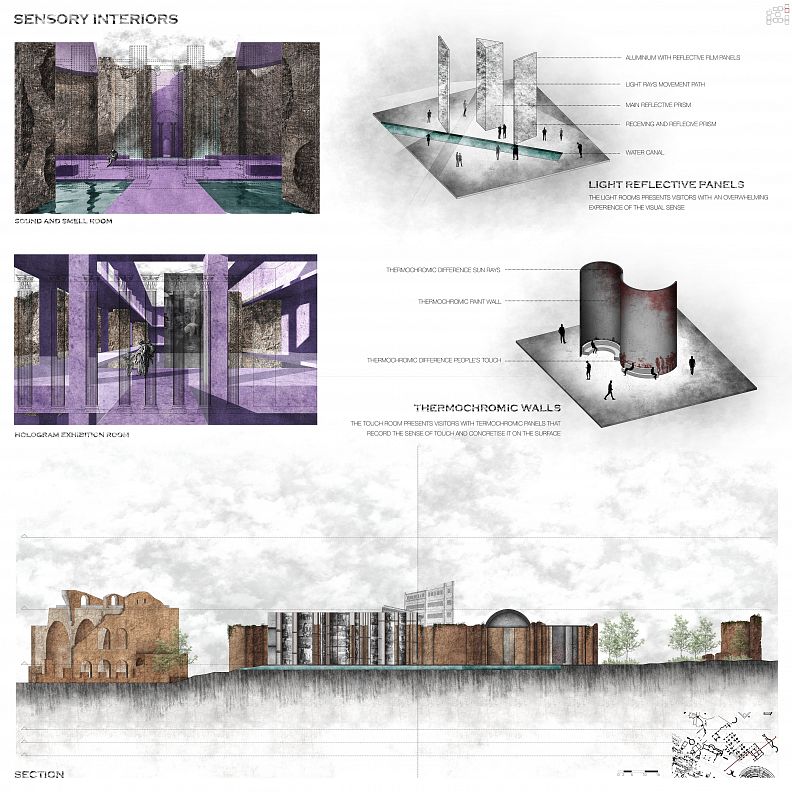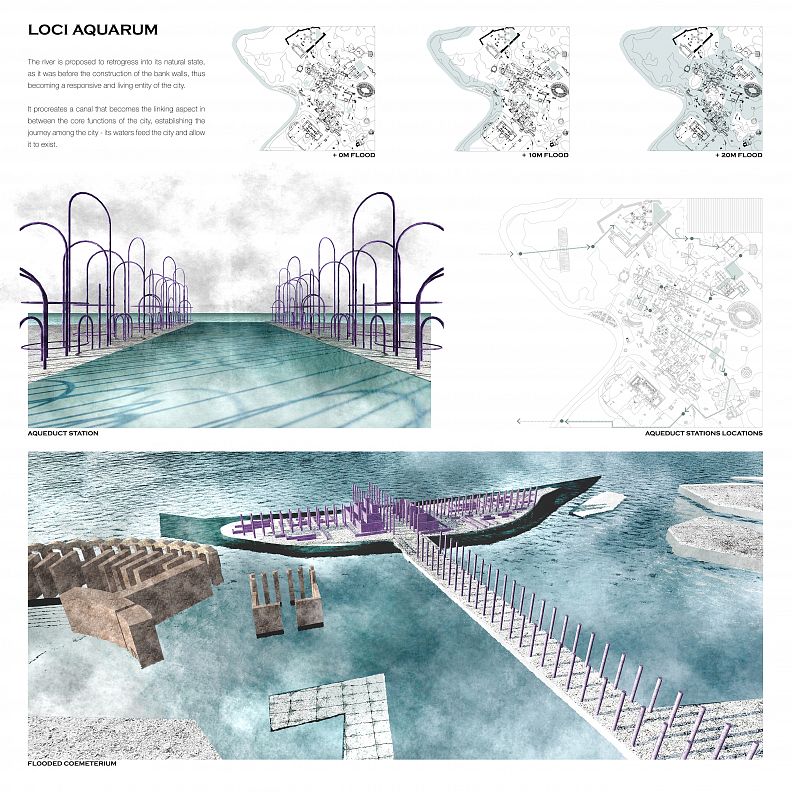Instauratio Urbis III

Project idea
Instauratio Urbis III draws out an imaginary of Rome that is focused on the peripheral modernist housing estates of the Fascist era known as the borgate. Promoted as improvements to sanitary conditions in the city, the borgate were simultaneously an instrument in Mussolini’s legitimising myth of Romanità and a politicisation of Rome’s ancient heritage, becoming complicit devices in the demolition of strata of architecture that had grown in and around the classical ruins, and the displacement of “parasitic” social classes that inhabited it.
Today, most Romans continue to live in the now expanded borgate, effectively testifying to long-lasting effects of urban segregation, which has since been amplified by the unavoidable loss of collective memory. Over the years the borgate became symbols of fascist doctrine but also of the partisan resistance, culture, political strength and community, becoming powerful controversial elements that stand at the core of Rome’s ethos.
This project aims to reconciliate Rome’s architectures, now saturated by controversial identities as they were during medieval revolutions, in Giovanni Battista Piranesi’s Campo Marzio or, more recently, in Paolo Pasolini’s films and poetry. Instauratio Urbis III becomes a medium through which the originally displaced communities of the borgate are invited to return to their native land, now manipulated and re-imagined, by means of a new imaginary, topographical layer.
Project description
Instauratio Urbis III perpetrates an imaginary instalment of the city of Rome as a reconceptualisation of the often unseen cultural and social identities of Roman fascist peripheral housing estates - the borgate - voicing critique towards architecture as means of segregation. The proposal establishes a dialogue of superimpositions between the city’s controversial identities and ruins as parallel but not equal monuments - the Roman ruins as the embodiments of the city’s temporal layers and the borgate as the city’s modern, interrogating, ruins.
The proposal stands as a continuation to Giovanni Battista Piranesi’s instalment of the city of Rome and Mussolini’s extremist urban reconstructions. However, whilst it draws inspiration from Piranesi’s imaginary city, it opposes Mussolini’s urban reconstruction by developing an architectural proposal that envisions the reconciliation of place.
The proposition invites the displaced communities of the borgate to return to the seven Roman hills along with re-designed architectural fragments of the borgate. The imaginary city unravels between the ruins and over a manipulated version of the historical landscape by form of a new superimposed topographical layer that reconceptualizes the identity of the borgate. Their cultural, architectural and social identity is extrapolated by means of their idiomatic building typology and reimagined through seven architectural propositions, each corresponding to a different borgata and new city function.
The superimposition of architectural proposals, historical landscape and complexion of ruins ultimately aims to reconstruct the fragile and stratified discontinuity between the city’s eras.
Technical information
The project output features a city masterplan that houses seven core functions, two auxiliary functions and water infrastructure for the Tiber River, as part of the imaginary instalment of the city of Rome. This is presented through a city axonometric that shows the break down of the superimposition of identities for each core building as well as a city Nolli plan that identifies the private and public relationship in the city. Three core buildings have been developed in detail (the three Domus), through orthogonal projections (plans, sections and elevations), exploded axonometrics, rendered visualisations and film. The images submitted provide a wide sample of both the city and detailed buildings output.


